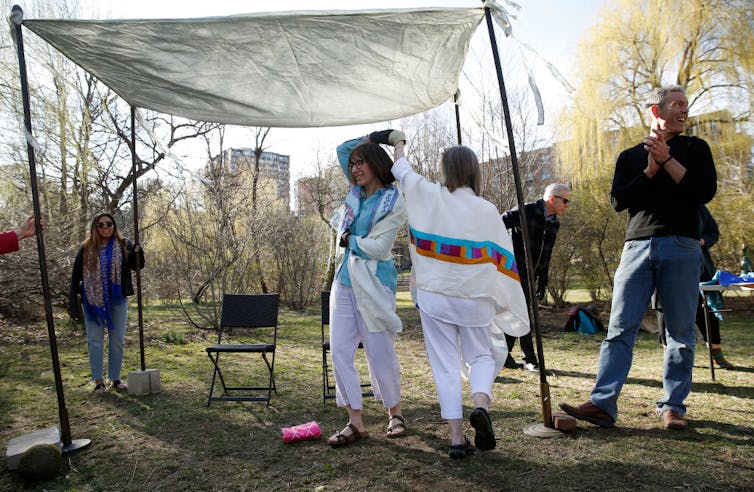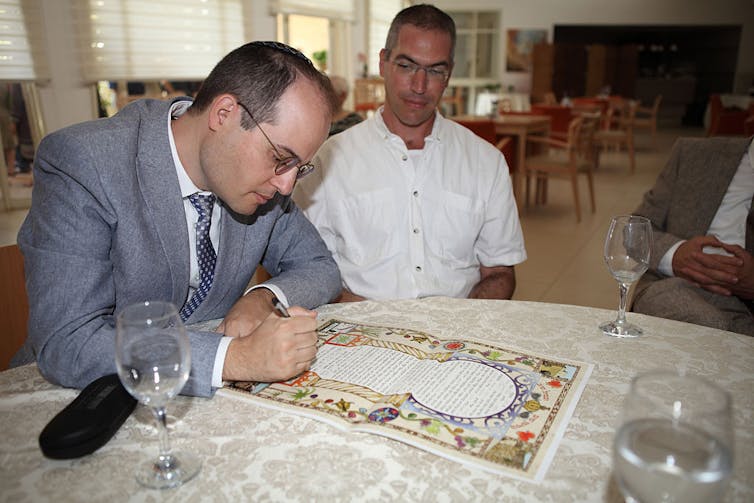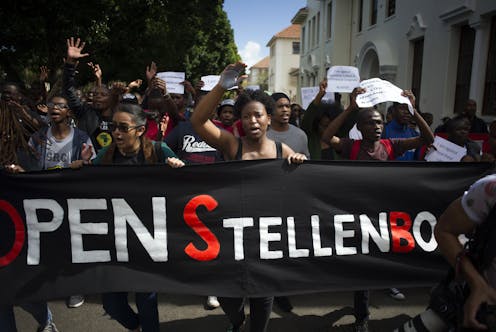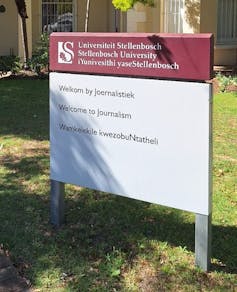Source: The Conversation – USA (2) – By Elizabeth Castaldo Lundén, Research Fellow at the School of Cinematic Arts, University of Southern California

Ahead of the Cannes Film Festival, the spotlight moved from movie stars and directors to the festival’s fashion rules.
Cannes reminded guests to follow the standard black-tie dress code for evening events at the Grand Theatre Lumière – “long dresses and tuxedos” – while highlighting acceptable alternatives, such as cocktail dresses and pantsuits for women, and a black or navy suit with a tie for men.
The real stir, however, came from two additions to the formal guidelines: a ban on nudity “for decency reasons” and a restriction on oversize garments.
The new rules caught many stylists and stars by surprise, with some decrying the move as a regressive attempt to police clothing.
It’s hard not to wonder whether this is part of some broader conservative cultural shift around the world.
But I study the cultural and economic forces behind fashion and media, and I think a lot of the criticism of Cannes is unfounded. To me, the festival isn’t changing its identity. It’s reasserting it.
Red carpet control
Concerns about indecency on the red carpet have appeared before – most notably during the first televised Academy Awards in 1953.
In 1952, the National Association of Radio and Television Broadcasters adopted a censorship code in response to concerns about television’s influence on young audiences. Among its rules for “decency and decorum” were guidelines against revealing clothing, suggestive movements or camera angles that emphasized body parts – all to avoid causing “embarrassment” to the viewers.

Bettmann/Getty Images
To ensure that no actress would break the decency dress code, the Academy of Motion Picture Arts and Sciences hired acclaimed costume designer Edith Head as a fashion consultant for the show in 1953.
In my book “Fashion on the Red Carpet,” I explain how Head equipped backstage staff with kits to deal with any sartorial emergencies that might arise. That same year, the balcony cameras at the Pantages Theatre accidentally peeked down into the actresses’ cleavage as they walked to the stage. From then on, a supply of tulle – a type of versatile fabric that can easily cover revealing openings that expose too much skin – was kept backstage.
The 1960s posed new challenges. Youth fashion trends clashed with traditional dress codes and television censorship. In 1968, after actress Inger Stevens appeared on the red carpet wearing a mini skirt, the Academy sent a letter reminding attendees of the black-tie – preferably floor-length – dress code. When Barbra Streisand’s Scaasi outfit accidentally turned see-through under the lighting in 1969, Head again warned against “freaky, far-out, unusual fashion” ahead of the 1970 ceremony.
However, in the 1970s, the Oscars eliminated Head’s fashion consultant position. Despite maintaining its black-tie dress code, the absence of a fashion consultant opened the door to some provocative attire, ranging from Cher’s see-through, sheer outfits, to Edy Williams’ provocative, barely-there getups.

Fotos International/Getty Images
Old rules in a new era
Racy red carpet appearances have since become a hallmark of awards shows, particularly in the digital age.
Extravagance and shock are a way for celebrities and brands to stand out amid a glut of social media content, especially as brands increasingly pay a fortune to turn celebrities into walking billboards.
And in an era when red carpet looks are carefully curated ahead of time through partnerships with fashion brands, many celebrities expressed frustration about being unable to sport the outfits they had planned to wear at Cannes.
Stylist Rose Forde lamented the restrictions, saying, “You should be able to express yourself as an artist, with your style however you feel,” while actress Chloë Sevigny described the code as “an old-fashioned archaic rule.”
But I still can’t see the Cannes rules as part of any sort of broader conservative backlash.
Whether at the Oscars or the MTV Video Music Awards, backlash over celebrities baring too much skin has gone on for decades. Cannes hasn’t been spared from controversy, either: There was Michelle Morgan’s bikini in 1946, La Cicciolina’s topless look in 1988, Madonna’s Jean Paul Gaultier lingerie in 1991, Leila Depina’s barely-there pearl outfit in 2023 and Bella Hadid’s sheer pantyhose dress in 2024, to name just a few.

Christophe Simon/AFP via Getty Images
The festival has routinely reminded guests of its dress code, regardless of the cultural zeitgeist.
The “decency” rule, for example, is actually required by French law. Article 222-32 of the French Criminal Code classifies showing private parts in public as a sexual offense, and can lead to a year in prison and a fine. While the legal definition hinges on intent and setting, the festival, as a public event, technically has to operate within that framework.
Compared to white-tie events like the Nobel Prize ceremony or a state banquet, Cannes’ black-tie requirement is relatively flexible. It allows for cocktail-length dresses and even accommodates pants and flat sandals for women.
Meanwhile, the worry about voluminous clothes points to a practical issue: the movement of bodies in tight spaces.
Unlike the Met Gala – where the fashion spectacle is the focus, and its red carpet is a stage for photo-ops – Cannes is a film festival. The red carpet is the main path thousands of people use to enter the theater.
A dramatic gown – like the one worn at the Met Gala by Cardi B in 2024 – could block others and cause delays. While a photo-op may be the primary goal for celebrities and the brands they promote, the festival has a screening schedule to stick to, and attendees must be able to easily access the venue and their seats.
Red carpet rules are fluid. Sometimes they adapt to cultural shifts. Sometimes they resist them. And sometimes, they’re there to make sure you can fit in your seat in the movie theater.
![]()
Elizabeth Castaldo Lundén received funding from Fulbright (2023-2024)
– ref. At Cannes, decency and dress codes clash with fashion’s red carpet revolution – https://theconversation.com/at-cannes-decency-and-dress-codes-clash-with-fashions-red-carpet-revolution-256948










